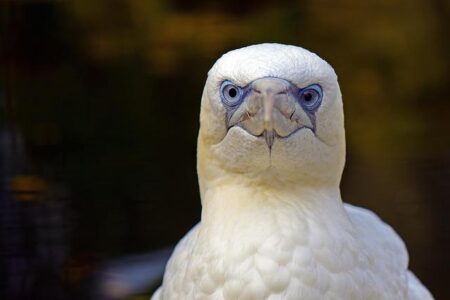SĂŁo TomĂ© and PrĂncipe Advances Marine Conservation with New Protected Area Network
In a decisive move to protect its marine wealth, SĂŁo TomĂ© and PrĂncipe has unveiled plans to create an extensive network of marine protected areas (MPAs) designed to conserve its vibrant and diverse ocean ecosystems. This development, highlighted by Mongabay, arrives amid escalating global alarm over the degradation of marine environments caused by overexploitation, habitat loss, and climate change. Renowned for its pristine coastal waters teeming with endemic species, this island nation aims not only to enhance ecological resilience but also to foster sustainable fisheries and eco-tourism ventures. By adopting this forward-thinking strategy, SĂŁo TomĂ© and PrĂncipe is positioning itself as a pioneering force in marine stewardship within the Gulf of Guinea region.
Comprehensive Marine Protection: A Strategic Vision for Sustainable Ocean Stewardship
The government’s initiative involves establishing a multifaceted network of MPAs that will cover critical habitats essential for the survival of numerous marine organisms. This approach reflects SĂŁo TomĂ© and PrĂncipe’s alignment with international conservation frameworks such as the Convention on Biological Diversity’s 30×30 target.
The MPA framework will incorporate several key components:
- Conservation of Vital Habitats: Protecting coral reefs, seagrass beds, mangrove forests-ecosystems that serve as nurseries for fish populations.
- Sustainable Fisheries Management: Introducing regulated fishing zones coupled with community-led quotas to prevent stock depletion while supporting local economies.
- Scientific Research & Monitoring: Developing ongoing data collection programs using modern technologies like satellite tracking and underwater drones to inform adaptive management policies.
- Community Participation & Empowerment: Engaging coastal residents through education campaigns and participatory governance models ensures conservation efforts align with socio-economic needs.
Biodiversity Under Threat: The Imperative for Robust Marine Resource Governance
The archipelago’s rich biodiversity faces mounting pressures from unsustainable fishing practices-over 70% of SĂŁo TomĂ©ans depend directly on fisheries-and environmental changes linked to global warming. The establishment of MPAs is critical in reversing trends such as coral bleaching events that have increased by nearly 40% globally since 2000 according to recent NOAA reports.
This initiative targets several urgent goals:
- Sustaining coral reef health alongside mangrove restoration projects vital for carbon sequestration;
- Curbing illegal fishing activities threatening species like hawksbill turtles (Eretmochelys imbricata) and migratory seabirds;
- Cultivating alternative livelihoods through eco-tourism opportunities projected by UNWTO data to grow at an annual rate exceeding 5% in West Africa;
A collaborative governance model involving government agencies, local fishers’ cooperatives, NGOs such as WWF-Africa, and international partners will be essential. This inclusive approach ensures that conservation measures are socially equitable while enhancing ecosystem services crucial for food security.
The Role of Local Communities Coupled With Global Partnerships in Ensuring Success
The success of these protected areas hinges on meaningful involvement from indigenous communities who possess generational knowledge about their maritime environment. Initiatives include:
- Organizing capacity-building workshops focused on sustainable resource use;
- Create co-management agreements where fishermen participate actively in enforcement mechanisms;
- Pioneering community-based eco-tourism projects offering economic incentives aligned with conservation goals;
Apart from grassroots engagement, international collaboration remains indispensable. Partnerships can provide technical expertise-for example via remote sensing technologies-and financial support through grants from entities like the Global Environment Facility (GEF). Priority areas include:
- Biodiversity baseline assessments using cutting-edge genetic barcoding techniques;
- Infrastructure investments facilitating monitoring stations equipped with real-time data transmission capabilities;
A Model Initiative Poised To Inspire Regional Conservation Efforts
SĂŁo TomĂ© and PrĂncipe’s commitment represents more than national ambition-it offers a replicable blueprint demonstrating how small island developing states can balance ecological preservation with socio-economic development amid climate challenges.< / p >
< p >By safeguarding its unique oceanic habitats through well-managed MPAs supported by both community stewardship and international cooperation , this island nation contributes meaningfully toward global biodiversity targets . As it advances , other countries within West Africa may look toward SĂŁo TomĂ© ‘ s experience when designing their own strategies against accelerating marine degradation .< / p >
< h3 >Final Thoughts< / h3 >
< p >The launch of this comprehensive MPA network marks a pivotal chapter in protecting SĂŁo TomĂ© & PrĂncipe’s invaluable maritime heritage . Beyond conserving endangered species , it promises enhanced food security , economic diversification via sustainable tourism ,and strengthened resilience against climate impacts . Through inclusive governance models blending traditional knowledge with scientific innovation backed by global partnerships , this initiative exemplifies effective ocean management poised to inspire similar efforts worldwide.< / p >
< li >Training programs aimed at equipping local stakeholders with skills in marine spatial planning;







